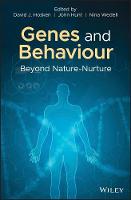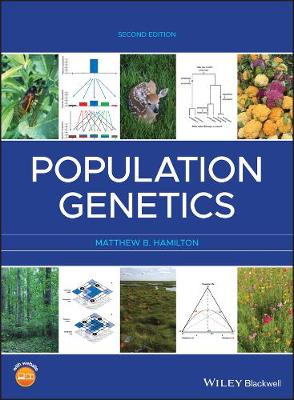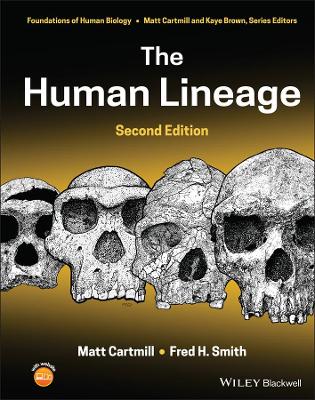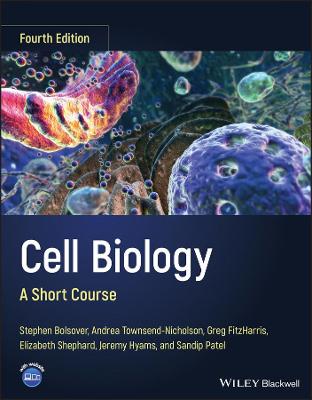Genes and Behaviour
 -15%
portes grátis
-15%
portes grátis
Genes and Behaviour
Beyond Nature-Nurture
Hunt, John; Wedell, Nina; Hosken, David J.
John Wiley & Sons Inc
04/2019
272
Dura
Inglês
9781119313427
15 a 20 dias
678
Descrição não disponível.
List of Contributors xiii
Preface xv
1 Nature, Nurture, and Nature-by-Nurture - Killing the Dichotomy 1
David J. Hosken, John Hunt and Nina Wedell
Acknowledgements 7
References 7
2 Ultimate (Re)Thinking for Behavioural Biology 11
Sasha R. X. Dall, John M. McNamara and Alastair J. Wilson
2.1 Evolutionary Reasoning in Modern Behavioural Biology 13
2.2 A Quantitative Genetic View of Behavioural Evolution 15
2.3 Short-Term Ultimate Reasoning: Behavioural Genetics in a Functional Context 20
2.4 Concluding Remarks 21
References 22
3 How the Dual Inheritance of Genes and Culture Shapes Behaviour: A Critical Review with a Focus on Human Culture and Behavioural Diversity 27
Thomas E. Currie
3.1 Culture and Behaviour 27
3.2 Cultural Evolution 30
3.2.1 Processes of Cultural Evolution 31
3.2.1.1 Variation 31
3.2.1.2 Inheritance 32
3.2.1.3 Selection and Fitness 34
3.3 Insights from Cultural Evolutionary Approaches 37
3.3.1 Adaptive and Maladaptive Behaviour 37
3.4 Cultural History 39
3.5 Culture and the Evolution of Co-operation 42
3.6 Gene-Culture Coevolution 45
3.7 Conclusion 48
Acknowledgements 50
References 50
4 Beyond Genes and Environments: Indirect Genetic Effects and the Evolution of Behaviour 61
John Hunt, James Rapkin, Clarissa M. House and Alastair J. Wilson
4.1 A Quantitative Genetic View of Behavioural Evolution without IGEs 63
4.2 Adding IGEs to the Traditional Theory 66
4.2.1 'Trait-Based' and 'Variance Partitioning' Models of IGEs 67
4.3 From Theory Towards Empiricism 68
4.3.1 Using Trait-Based Models 69
4.3.2 Using Variance Partitioning Models 71
4.3.3 Is Knowledge of the Interactor Trait Critical to Your Study? 72
4.4 Empirical Evidence for IGEs on Behavioural Traits 73
4.4.1 Social Plasticity of Behaviour is Widespread 73
4.4.2 Does Social Plasticity Generate IGEs on Focal Behaviour? 78
4.5 What are the Evolutionary Consequences of IGEs? 81
4.5.1 What about the Role of Social Selection? 82
4.5.2 What Happens When ? is Also Able to Evolve? 83
4.5.3 Can IGEs Influence Other Important Evolutionary Processes? 83
4.5.4 What are the Longer Term Consequences of IGEs? 85
4.6 Conclusions and Future Directions 85
References 87
5 Genes and Behaviour 93
Chelsea A. Weitekamp and Laurent Keller
5.1 Genetic Architecture of Phenotypic Traits 94
5.2 Effects of Single Genes on Behaviour 95
5.2.1 The Foraging Gene and Food-Search Behaviour 97
5.2.2 Arginine Vasopressin Receptor and Pair-Bonding Behaviour 98
5.2.3 Neuropeptide Y Homolog, Sensory Neurons, and Social Feeding Behaviour 98
5.3 Effects of Supergenes on Behaviour 99
5.3.1 Social Organization in Ants 100
5.3.2 Alternative Mating Tactics in Birds 100
5.4 Evolvability of Behaviour-Associated Genes 101
5.5 Are Behavioural Traits Unique? 101
5.6 Conclusion 103
Acknowledgements 103
References 103
6 Genes and Environments in Drosophila Sex 111
David J. Hosken, Amanda Bretman, Stephen F. Goodwin and C. Ruth Archer
6.1 Some Challenges 111
6.2 Introducing Drosophila 112
6.3 The Behaviours 112
6.4 The Genes 113
6.4.1 Single Genes 113
6.4.2 Many Additive Genes 115
6.5 The Environments and the Interactions 116
6.5.1 Social Environments 116
6.5.2 Abiotic Environments 119
6.6 Conclusions 120
Acknowledgements 120
References 120
7 Nature and Nurture in Parental Care 131
Nick J. Royle and Allen J. Moore
7.1 Genetics Underlying Parental Care 133
7.1.1 Quantitative Genetic Studies 134
7.1.2 Molecular Genetic Studies 135
7.2 Parental Care is Environmentally Sensitive 137
7.2.1 Hormonal Mediation of Parental Care 138
7.3 Gene by Family Environment Interactions 141
7.3.1 GxFE Studies 141
7.3.2 Heritability of the Social Environment and IGEs 143
7.3.3 Coadaptation and Correlational Selection (Social Epistasis as a Special Case of GxFE) 145
7.4 Summary and Conclusion 147
References 148
8 The Effect of Non-Self Genes on the Behaviour of Hosts 157
Nina Wedell
8.1 What are Non-Self Genes (NSGs)? 158
8.2 Indirect Effects of NSGs 158
8.3 Direct Effects of NSGs 159
8.4 Host Responses 160
8.5 Odour is a Key Signal 161
8.6 Kin Recognition 162
8.7 Mate Choice and Reproductive Behaviour 163
8.8 Aggressiveness 166
8.9 Activity, Aggregation, and Dispersal 167
8.10 Feeding 168
8.11 Learning and Memory 170
8.12 Summary and Conclusion 171
References 172
9 The Nature and Nurturing of Animal Minds 181
Alex Thornton and Neeltje J. Boogert
9.1 Cognition Evolves 183
9.1.1 Adaptive Cognitive Specializations 183
9.1.2 Heritability of Cognitive Traits 185
9.2 Cognition Develops 187
9.2.1 Cognitive Consequences of a Poor Start in Life 187
9.2.2 Cognitive Silver Spoons 188
9.2.3 Adaptive Developmental Plasticity in Cognition 189
9.3 Cognitive Reaction Norms: Mind-Moulding Gene-by-Environment Interactions 191
9.3.1 The Mystery of (the Lack of) Cognitive Resilience 192
9.3.2 Practice Makes Perfect: Genetic Quality and Cognitive Silver Spoons 193
9.3.3 Cultural and Epigenetic Inheritance of Cognitive Traits 194
9.3.4 Gene by Environment and Methodological Issues in Comparative Cognition 194
9.4 Conclusion 195
References 196
10 Evolution and Human Behaviour: Helping to Make Sense of Modern Life 203
Louise Barrett and Gert Stulp
10.1 Understanding Interaction 204
10.2 Understanding the Scope and Limits of an Evolutionary Approach 205
10.3 Evolutionary Thinking as Puzzle Solving 206
10.4 Recognizing the Consequences of Our Actions 208
10.5 Thinking Differently about Fertility Control 210
10.6 Modern Contraception and Mate Choice 212
10.7 Evolution and Assisted Reproductive Technologies 214
10.8 No Free Lunch 216
10.9 Conclusion 217
References 218
11 Next-Gen and the Study of Behaviour 223
Simone Immler
11.1 Current Sequencing Technologies 223
11.1.1 Genome-Wide Association Study (GWAS) and Linkage Mapping 224
11.1.1.1 Microarrays 226
11.1.1.2 RAD Sequencing 227
11.1.1.3 Exome Sequencing 227
11.1.1.4 Whole-Genome Sequencing 227
11.1.2 Gene Expression Analyses 228
11.1.2.1 RNA Sequencing (RNAseq) 228
11.1.3 Epigenetic Analyses 228
11.1.3.1 CHiP Sequencing (CHiPseq) 228
11.1.3.2 Bisulfite Sequencing 229
11.2 Caveats and Challenges and Some Solutions 229
11.2.1 Solid Phenotype 229
11.2.2 Sample Quality 230
11.2.3 Sampling 230
11.2.4 Libraries and Sample Pools 230
11.2.5 Reference Genome 231
11.2.6 Sample Size 232
11.2.7 Replication 232
11.2.8 Coverage 232
11.2.9 Pilot Studies 233
11.2.10 Time and Planning 233
11.2.11 Bioinformatics 233
11.2.12 Collaboration 234
11.3 Linking Behavioural Phenotypes to Genotypes using NGS 234
11.4 What's Next 237
11.4.1 Understanding the Non-Coding Regions of the Genome 238
11.4.2 Gene Knock-down and Knock-out in Non-Model Organisms 238
11.5 Concluding Remarks 240
References 240
12 Nature-Nurture in the Twenty-First Century 245
Nina Wedell, John Hunt and David J. Hosken
Acknowledgements 249
References 249
Index 253
Preface xv
1 Nature, Nurture, and Nature-by-Nurture - Killing the Dichotomy 1
David J. Hosken, John Hunt and Nina Wedell
Acknowledgements 7
References 7
2 Ultimate (Re)Thinking for Behavioural Biology 11
Sasha R. X. Dall, John M. McNamara and Alastair J. Wilson
2.1 Evolutionary Reasoning in Modern Behavioural Biology 13
2.2 A Quantitative Genetic View of Behavioural Evolution 15
2.3 Short-Term Ultimate Reasoning: Behavioural Genetics in a Functional Context 20
2.4 Concluding Remarks 21
References 22
3 How the Dual Inheritance of Genes and Culture Shapes Behaviour: A Critical Review with a Focus on Human Culture and Behavioural Diversity 27
Thomas E. Currie
3.1 Culture and Behaviour 27
3.2 Cultural Evolution 30
3.2.1 Processes of Cultural Evolution 31
3.2.1.1 Variation 31
3.2.1.2 Inheritance 32
3.2.1.3 Selection and Fitness 34
3.3 Insights from Cultural Evolutionary Approaches 37
3.3.1 Adaptive and Maladaptive Behaviour 37
3.4 Cultural History 39
3.5 Culture and the Evolution of Co-operation 42
3.6 Gene-Culture Coevolution 45
3.7 Conclusion 48
Acknowledgements 50
References 50
4 Beyond Genes and Environments: Indirect Genetic Effects and the Evolution of Behaviour 61
John Hunt, James Rapkin, Clarissa M. House and Alastair J. Wilson
4.1 A Quantitative Genetic View of Behavioural Evolution without IGEs 63
4.2 Adding IGEs to the Traditional Theory 66
4.2.1 'Trait-Based' and 'Variance Partitioning' Models of IGEs 67
4.3 From Theory Towards Empiricism 68
4.3.1 Using Trait-Based Models 69
4.3.2 Using Variance Partitioning Models 71
4.3.3 Is Knowledge of the Interactor Trait Critical to Your Study? 72
4.4 Empirical Evidence for IGEs on Behavioural Traits 73
4.4.1 Social Plasticity of Behaviour is Widespread 73
4.4.2 Does Social Plasticity Generate IGEs on Focal Behaviour? 78
4.5 What are the Evolutionary Consequences of IGEs? 81
4.5.1 What about the Role of Social Selection? 82
4.5.2 What Happens When ? is Also Able to Evolve? 83
4.5.3 Can IGEs Influence Other Important Evolutionary Processes? 83
4.5.4 What are the Longer Term Consequences of IGEs? 85
4.6 Conclusions and Future Directions 85
References 87
5 Genes and Behaviour 93
Chelsea A. Weitekamp and Laurent Keller
5.1 Genetic Architecture of Phenotypic Traits 94
5.2 Effects of Single Genes on Behaviour 95
5.2.1 The Foraging Gene and Food-Search Behaviour 97
5.2.2 Arginine Vasopressin Receptor and Pair-Bonding Behaviour 98
5.2.3 Neuropeptide Y Homolog, Sensory Neurons, and Social Feeding Behaviour 98
5.3 Effects of Supergenes on Behaviour 99
5.3.1 Social Organization in Ants 100
5.3.2 Alternative Mating Tactics in Birds 100
5.4 Evolvability of Behaviour-Associated Genes 101
5.5 Are Behavioural Traits Unique? 101
5.6 Conclusion 103
Acknowledgements 103
References 103
6 Genes and Environments in Drosophila Sex 111
David J. Hosken, Amanda Bretman, Stephen F. Goodwin and C. Ruth Archer
6.1 Some Challenges 111
6.2 Introducing Drosophila 112
6.3 The Behaviours 112
6.4 The Genes 113
6.4.1 Single Genes 113
6.4.2 Many Additive Genes 115
6.5 The Environments and the Interactions 116
6.5.1 Social Environments 116
6.5.2 Abiotic Environments 119
6.6 Conclusions 120
Acknowledgements 120
References 120
7 Nature and Nurture in Parental Care 131
Nick J. Royle and Allen J. Moore
7.1 Genetics Underlying Parental Care 133
7.1.1 Quantitative Genetic Studies 134
7.1.2 Molecular Genetic Studies 135
7.2 Parental Care is Environmentally Sensitive 137
7.2.1 Hormonal Mediation of Parental Care 138
7.3 Gene by Family Environment Interactions 141
7.3.1 GxFE Studies 141
7.3.2 Heritability of the Social Environment and IGEs 143
7.3.3 Coadaptation and Correlational Selection (Social Epistasis as a Special Case of GxFE) 145
7.4 Summary and Conclusion 147
References 148
8 The Effect of Non-Self Genes on the Behaviour of Hosts 157
Nina Wedell
8.1 What are Non-Self Genes (NSGs)? 158
8.2 Indirect Effects of NSGs 158
8.3 Direct Effects of NSGs 159
8.4 Host Responses 160
8.5 Odour is a Key Signal 161
8.6 Kin Recognition 162
8.7 Mate Choice and Reproductive Behaviour 163
8.8 Aggressiveness 166
8.9 Activity, Aggregation, and Dispersal 167
8.10 Feeding 168
8.11 Learning and Memory 170
8.12 Summary and Conclusion 171
References 172
9 The Nature and Nurturing of Animal Minds 181
Alex Thornton and Neeltje J. Boogert
9.1 Cognition Evolves 183
9.1.1 Adaptive Cognitive Specializations 183
9.1.2 Heritability of Cognitive Traits 185
9.2 Cognition Develops 187
9.2.1 Cognitive Consequences of a Poor Start in Life 187
9.2.2 Cognitive Silver Spoons 188
9.2.3 Adaptive Developmental Plasticity in Cognition 189
9.3 Cognitive Reaction Norms: Mind-Moulding Gene-by-Environment Interactions 191
9.3.1 The Mystery of (the Lack of) Cognitive Resilience 192
9.3.2 Practice Makes Perfect: Genetic Quality and Cognitive Silver Spoons 193
9.3.3 Cultural and Epigenetic Inheritance of Cognitive Traits 194
9.3.4 Gene by Environment and Methodological Issues in Comparative Cognition 194
9.4 Conclusion 195
References 196
10 Evolution and Human Behaviour: Helping to Make Sense of Modern Life 203
Louise Barrett and Gert Stulp
10.1 Understanding Interaction 204
10.2 Understanding the Scope and Limits of an Evolutionary Approach 205
10.3 Evolutionary Thinking as Puzzle Solving 206
10.4 Recognizing the Consequences of Our Actions 208
10.5 Thinking Differently about Fertility Control 210
10.6 Modern Contraception and Mate Choice 212
10.7 Evolution and Assisted Reproductive Technologies 214
10.8 No Free Lunch 216
10.9 Conclusion 217
References 218
11 Next-Gen and the Study of Behaviour 223
Simone Immler
11.1 Current Sequencing Technologies 223
11.1.1 Genome-Wide Association Study (GWAS) and Linkage Mapping 224
11.1.1.1 Microarrays 226
11.1.1.2 RAD Sequencing 227
11.1.1.3 Exome Sequencing 227
11.1.1.4 Whole-Genome Sequencing 227
11.1.2 Gene Expression Analyses 228
11.1.2.1 RNA Sequencing (RNAseq) 228
11.1.3 Epigenetic Analyses 228
11.1.3.1 CHiP Sequencing (CHiPseq) 228
11.1.3.2 Bisulfite Sequencing 229
11.2 Caveats and Challenges and Some Solutions 229
11.2.1 Solid Phenotype 229
11.2.2 Sample Quality 230
11.2.3 Sampling 230
11.2.4 Libraries and Sample Pools 230
11.2.5 Reference Genome 231
11.2.6 Sample Size 232
11.2.7 Replication 232
11.2.8 Coverage 232
11.2.9 Pilot Studies 233
11.2.10 Time and Planning 233
11.2.11 Bioinformatics 233
11.2.12 Collaboration 234
11.3 Linking Behavioural Phenotypes to Genotypes using NGS 234
11.4 What's Next 237
11.4.1 Understanding the Non-Coding Regions of the Genome 238
11.4.2 Gene Knock-down and Knock-out in Non-Model Organisms 238
11.5 Concluding Remarks 240
References 240
12 Nature-Nurture in the Twenty-First Century 245
Nina Wedell, John Hunt and David J. Hosken
Acknowledgements 249
References 249
Index 253
Este título pertence ao(s) assunto(s) indicados(s). Para ver outros títulos clique no assunto desejado.
behavior; behavioral ecology; behavioral genetics; evolution; journal of evolutionary biology; current biology; trends in ecology; trends in evolution; trends in genetics; quarterly review of biology; genes; genetics; genetic studies; sociology; genes and behavior; environment and behavior; quantitative genetics; phenotypes; phenotype studies; evolutionary biology; nature vs nurture; nature versus nurture; nature-nurture; nature vs. nurture
List of Contributors xiii
Preface xv
1 Nature, Nurture, and Nature-by-Nurture - Killing the Dichotomy 1
David J. Hosken, John Hunt and Nina Wedell
Acknowledgements 7
References 7
2 Ultimate (Re)Thinking for Behavioural Biology 11
Sasha R. X. Dall, John M. McNamara and Alastair J. Wilson
2.1 Evolutionary Reasoning in Modern Behavioural Biology 13
2.2 A Quantitative Genetic View of Behavioural Evolution 15
2.3 Short-Term Ultimate Reasoning: Behavioural Genetics in a Functional Context 20
2.4 Concluding Remarks 21
References 22
3 How the Dual Inheritance of Genes and Culture Shapes Behaviour: A Critical Review with a Focus on Human Culture and Behavioural Diversity 27
Thomas E. Currie
3.1 Culture and Behaviour 27
3.2 Cultural Evolution 30
3.2.1 Processes of Cultural Evolution 31
3.2.1.1 Variation 31
3.2.1.2 Inheritance 32
3.2.1.3 Selection and Fitness 34
3.3 Insights from Cultural Evolutionary Approaches 37
3.3.1 Adaptive and Maladaptive Behaviour 37
3.4 Cultural History 39
3.5 Culture and the Evolution of Co-operation 42
3.6 Gene-Culture Coevolution 45
3.7 Conclusion 48
Acknowledgements 50
References 50
4 Beyond Genes and Environments: Indirect Genetic Effects and the Evolution of Behaviour 61
John Hunt, James Rapkin, Clarissa M. House and Alastair J. Wilson
4.1 A Quantitative Genetic View of Behavioural Evolution without IGEs 63
4.2 Adding IGEs to the Traditional Theory 66
4.2.1 'Trait-Based' and 'Variance Partitioning' Models of IGEs 67
4.3 From Theory Towards Empiricism 68
4.3.1 Using Trait-Based Models 69
4.3.2 Using Variance Partitioning Models 71
4.3.3 Is Knowledge of the Interactor Trait Critical to Your Study? 72
4.4 Empirical Evidence for IGEs on Behavioural Traits 73
4.4.1 Social Plasticity of Behaviour is Widespread 73
4.4.2 Does Social Plasticity Generate IGEs on Focal Behaviour? 78
4.5 What are the Evolutionary Consequences of IGEs? 81
4.5.1 What about the Role of Social Selection? 82
4.5.2 What Happens When ? is Also Able to Evolve? 83
4.5.3 Can IGEs Influence Other Important Evolutionary Processes? 83
4.5.4 What are the Longer Term Consequences of IGEs? 85
4.6 Conclusions and Future Directions 85
References 87
5 Genes and Behaviour 93
Chelsea A. Weitekamp and Laurent Keller
5.1 Genetic Architecture of Phenotypic Traits 94
5.2 Effects of Single Genes on Behaviour 95
5.2.1 The Foraging Gene and Food-Search Behaviour 97
5.2.2 Arginine Vasopressin Receptor and Pair-Bonding Behaviour 98
5.2.3 Neuropeptide Y Homolog, Sensory Neurons, and Social Feeding Behaviour 98
5.3 Effects of Supergenes on Behaviour 99
5.3.1 Social Organization in Ants 100
5.3.2 Alternative Mating Tactics in Birds 100
5.4 Evolvability of Behaviour-Associated Genes 101
5.5 Are Behavioural Traits Unique? 101
5.6 Conclusion 103
Acknowledgements 103
References 103
6 Genes and Environments in Drosophila Sex 111
David J. Hosken, Amanda Bretman, Stephen F. Goodwin and C. Ruth Archer
6.1 Some Challenges 111
6.2 Introducing Drosophila 112
6.3 The Behaviours 112
6.4 The Genes 113
6.4.1 Single Genes 113
6.4.2 Many Additive Genes 115
6.5 The Environments and the Interactions 116
6.5.1 Social Environments 116
6.5.2 Abiotic Environments 119
6.6 Conclusions 120
Acknowledgements 120
References 120
7 Nature and Nurture in Parental Care 131
Nick J. Royle and Allen J. Moore
7.1 Genetics Underlying Parental Care 133
7.1.1 Quantitative Genetic Studies 134
7.1.2 Molecular Genetic Studies 135
7.2 Parental Care is Environmentally Sensitive 137
7.2.1 Hormonal Mediation of Parental Care 138
7.3 Gene by Family Environment Interactions 141
7.3.1 GxFE Studies 141
7.3.2 Heritability of the Social Environment and IGEs 143
7.3.3 Coadaptation and Correlational Selection (Social Epistasis as a Special Case of GxFE) 145
7.4 Summary and Conclusion 147
References 148
8 The Effect of Non-Self Genes on the Behaviour of Hosts 157
Nina Wedell
8.1 What are Non-Self Genes (NSGs)? 158
8.2 Indirect Effects of NSGs 158
8.3 Direct Effects of NSGs 159
8.4 Host Responses 160
8.5 Odour is a Key Signal 161
8.6 Kin Recognition 162
8.7 Mate Choice and Reproductive Behaviour 163
8.8 Aggressiveness 166
8.9 Activity, Aggregation, and Dispersal 167
8.10 Feeding 168
8.11 Learning and Memory 170
8.12 Summary and Conclusion 171
References 172
9 The Nature and Nurturing of Animal Minds 181
Alex Thornton and Neeltje J. Boogert
9.1 Cognition Evolves 183
9.1.1 Adaptive Cognitive Specializations 183
9.1.2 Heritability of Cognitive Traits 185
9.2 Cognition Develops 187
9.2.1 Cognitive Consequences of a Poor Start in Life 187
9.2.2 Cognitive Silver Spoons 188
9.2.3 Adaptive Developmental Plasticity in Cognition 189
9.3 Cognitive Reaction Norms: Mind-Moulding Gene-by-Environment Interactions 191
9.3.1 The Mystery of (the Lack of) Cognitive Resilience 192
9.3.2 Practice Makes Perfect: Genetic Quality and Cognitive Silver Spoons 193
9.3.3 Cultural and Epigenetic Inheritance of Cognitive Traits 194
9.3.4 Gene by Environment and Methodological Issues in Comparative Cognition 194
9.4 Conclusion 195
References 196
10 Evolution and Human Behaviour: Helping to Make Sense of Modern Life 203
Louise Barrett and Gert Stulp
10.1 Understanding Interaction 204
10.2 Understanding the Scope and Limits of an Evolutionary Approach 205
10.3 Evolutionary Thinking as Puzzle Solving 206
10.4 Recognizing the Consequences of Our Actions 208
10.5 Thinking Differently about Fertility Control 210
10.6 Modern Contraception and Mate Choice 212
10.7 Evolution and Assisted Reproductive Technologies 214
10.8 No Free Lunch 216
10.9 Conclusion 217
References 218
11 Next-Gen and the Study of Behaviour 223
Simone Immler
11.1 Current Sequencing Technologies 223
11.1.1 Genome-Wide Association Study (GWAS) and Linkage Mapping 224
11.1.1.1 Microarrays 226
11.1.1.2 RAD Sequencing 227
11.1.1.3 Exome Sequencing 227
11.1.1.4 Whole-Genome Sequencing 227
11.1.2 Gene Expression Analyses 228
11.1.2.1 RNA Sequencing (RNAseq) 228
11.1.3 Epigenetic Analyses 228
11.1.3.1 CHiP Sequencing (CHiPseq) 228
11.1.3.2 Bisulfite Sequencing 229
11.2 Caveats and Challenges and Some Solutions 229
11.2.1 Solid Phenotype 229
11.2.2 Sample Quality 230
11.2.3 Sampling 230
11.2.4 Libraries and Sample Pools 230
11.2.5 Reference Genome 231
11.2.6 Sample Size 232
11.2.7 Replication 232
11.2.8 Coverage 232
11.2.9 Pilot Studies 233
11.2.10 Time and Planning 233
11.2.11 Bioinformatics 233
11.2.12 Collaboration 234
11.3 Linking Behavioural Phenotypes to Genotypes using NGS 234
11.4 What's Next 237
11.4.1 Understanding the Non-Coding Regions of the Genome 238
11.4.2 Gene Knock-down and Knock-out in Non-Model Organisms 238
11.5 Concluding Remarks 240
References 240
12 Nature-Nurture in the Twenty-First Century 245
Nina Wedell, John Hunt and David J. Hosken
Acknowledgements 249
References 249
Index 253
Preface xv
1 Nature, Nurture, and Nature-by-Nurture - Killing the Dichotomy 1
David J. Hosken, John Hunt and Nina Wedell
Acknowledgements 7
References 7
2 Ultimate (Re)Thinking for Behavioural Biology 11
Sasha R. X. Dall, John M. McNamara and Alastair J. Wilson
2.1 Evolutionary Reasoning in Modern Behavioural Biology 13
2.2 A Quantitative Genetic View of Behavioural Evolution 15
2.3 Short-Term Ultimate Reasoning: Behavioural Genetics in a Functional Context 20
2.4 Concluding Remarks 21
References 22
3 How the Dual Inheritance of Genes and Culture Shapes Behaviour: A Critical Review with a Focus on Human Culture and Behavioural Diversity 27
Thomas E. Currie
3.1 Culture and Behaviour 27
3.2 Cultural Evolution 30
3.2.1 Processes of Cultural Evolution 31
3.2.1.1 Variation 31
3.2.1.2 Inheritance 32
3.2.1.3 Selection and Fitness 34
3.3 Insights from Cultural Evolutionary Approaches 37
3.3.1 Adaptive and Maladaptive Behaviour 37
3.4 Cultural History 39
3.5 Culture and the Evolution of Co-operation 42
3.6 Gene-Culture Coevolution 45
3.7 Conclusion 48
Acknowledgements 50
References 50
4 Beyond Genes and Environments: Indirect Genetic Effects and the Evolution of Behaviour 61
John Hunt, James Rapkin, Clarissa M. House and Alastair J. Wilson
4.1 A Quantitative Genetic View of Behavioural Evolution without IGEs 63
4.2 Adding IGEs to the Traditional Theory 66
4.2.1 'Trait-Based' and 'Variance Partitioning' Models of IGEs 67
4.3 From Theory Towards Empiricism 68
4.3.1 Using Trait-Based Models 69
4.3.2 Using Variance Partitioning Models 71
4.3.3 Is Knowledge of the Interactor Trait Critical to Your Study? 72
4.4 Empirical Evidence for IGEs on Behavioural Traits 73
4.4.1 Social Plasticity of Behaviour is Widespread 73
4.4.2 Does Social Plasticity Generate IGEs on Focal Behaviour? 78
4.5 What are the Evolutionary Consequences of IGEs? 81
4.5.1 What about the Role of Social Selection? 82
4.5.2 What Happens When ? is Also Able to Evolve? 83
4.5.3 Can IGEs Influence Other Important Evolutionary Processes? 83
4.5.4 What are the Longer Term Consequences of IGEs? 85
4.6 Conclusions and Future Directions 85
References 87
5 Genes and Behaviour 93
Chelsea A. Weitekamp and Laurent Keller
5.1 Genetic Architecture of Phenotypic Traits 94
5.2 Effects of Single Genes on Behaviour 95
5.2.1 The Foraging Gene and Food-Search Behaviour 97
5.2.2 Arginine Vasopressin Receptor and Pair-Bonding Behaviour 98
5.2.3 Neuropeptide Y Homolog, Sensory Neurons, and Social Feeding Behaviour 98
5.3 Effects of Supergenes on Behaviour 99
5.3.1 Social Organization in Ants 100
5.3.2 Alternative Mating Tactics in Birds 100
5.4 Evolvability of Behaviour-Associated Genes 101
5.5 Are Behavioural Traits Unique? 101
5.6 Conclusion 103
Acknowledgements 103
References 103
6 Genes and Environments in Drosophila Sex 111
David J. Hosken, Amanda Bretman, Stephen F. Goodwin and C. Ruth Archer
6.1 Some Challenges 111
6.2 Introducing Drosophila 112
6.3 The Behaviours 112
6.4 The Genes 113
6.4.1 Single Genes 113
6.4.2 Many Additive Genes 115
6.5 The Environments and the Interactions 116
6.5.1 Social Environments 116
6.5.2 Abiotic Environments 119
6.6 Conclusions 120
Acknowledgements 120
References 120
7 Nature and Nurture in Parental Care 131
Nick J. Royle and Allen J. Moore
7.1 Genetics Underlying Parental Care 133
7.1.1 Quantitative Genetic Studies 134
7.1.2 Molecular Genetic Studies 135
7.2 Parental Care is Environmentally Sensitive 137
7.2.1 Hormonal Mediation of Parental Care 138
7.3 Gene by Family Environment Interactions 141
7.3.1 GxFE Studies 141
7.3.2 Heritability of the Social Environment and IGEs 143
7.3.3 Coadaptation and Correlational Selection (Social Epistasis as a Special Case of GxFE) 145
7.4 Summary and Conclusion 147
References 148
8 The Effect of Non-Self Genes on the Behaviour of Hosts 157
Nina Wedell
8.1 What are Non-Self Genes (NSGs)? 158
8.2 Indirect Effects of NSGs 158
8.3 Direct Effects of NSGs 159
8.4 Host Responses 160
8.5 Odour is a Key Signal 161
8.6 Kin Recognition 162
8.7 Mate Choice and Reproductive Behaviour 163
8.8 Aggressiveness 166
8.9 Activity, Aggregation, and Dispersal 167
8.10 Feeding 168
8.11 Learning and Memory 170
8.12 Summary and Conclusion 171
References 172
9 The Nature and Nurturing of Animal Minds 181
Alex Thornton and Neeltje J. Boogert
9.1 Cognition Evolves 183
9.1.1 Adaptive Cognitive Specializations 183
9.1.2 Heritability of Cognitive Traits 185
9.2 Cognition Develops 187
9.2.1 Cognitive Consequences of a Poor Start in Life 187
9.2.2 Cognitive Silver Spoons 188
9.2.3 Adaptive Developmental Plasticity in Cognition 189
9.3 Cognitive Reaction Norms: Mind-Moulding Gene-by-Environment Interactions 191
9.3.1 The Mystery of (the Lack of) Cognitive Resilience 192
9.3.2 Practice Makes Perfect: Genetic Quality and Cognitive Silver Spoons 193
9.3.3 Cultural and Epigenetic Inheritance of Cognitive Traits 194
9.3.4 Gene by Environment and Methodological Issues in Comparative Cognition 194
9.4 Conclusion 195
References 196
10 Evolution and Human Behaviour: Helping to Make Sense of Modern Life 203
Louise Barrett and Gert Stulp
10.1 Understanding Interaction 204
10.2 Understanding the Scope and Limits of an Evolutionary Approach 205
10.3 Evolutionary Thinking as Puzzle Solving 206
10.4 Recognizing the Consequences of Our Actions 208
10.5 Thinking Differently about Fertility Control 210
10.6 Modern Contraception and Mate Choice 212
10.7 Evolution and Assisted Reproductive Technologies 214
10.8 No Free Lunch 216
10.9 Conclusion 217
References 218
11 Next-Gen and the Study of Behaviour 223
Simone Immler
11.1 Current Sequencing Technologies 223
11.1.1 Genome-Wide Association Study (GWAS) and Linkage Mapping 224
11.1.1.1 Microarrays 226
11.1.1.2 RAD Sequencing 227
11.1.1.3 Exome Sequencing 227
11.1.1.4 Whole-Genome Sequencing 227
11.1.2 Gene Expression Analyses 228
11.1.2.1 RNA Sequencing (RNAseq) 228
11.1.3 Epigenetic Analyses 228
11.1.3.1 CHiP Sequencing (CHiPseq) 228
11.1.3.2 Bisulfite Sequencing 229
11.2 Caveats and Challenges and Some Solutions 229
11.2.1 Solid Phenotype 229
11.2.2 Sample Quality 230
11.2.3 Sampling 230
11.2.4 Libraries and Sample Pools 230
11.2.5 Reference Genome 231
11.2.6 Sample Size 232
11.2.7 Replication 232
11.2.8 Coverage 232
11.2.9 Pilot Studies 233
11.2.10 Time and Planning 233
11.2.11 Bioinformatics 233
11.2.12 Collaboration 234
11.3 Linking Behavioural Phenotypes to Genotypes using NGS 234
11.4 What's Next 237
11.4.1 Understanding the Non-Coding Regions of the Genome 238
11.4.2 Gene Knock-down and Knock-out in Non-Model Organisms 238
11.5 Concluding Remarks 240
References 240
12 Nature-Nurture in the Twenty-First Century 245
Nina Wedell, John Hunt and David J. Hosken
Acknowledgements 249
References 249
Index 253
Este título pertence ao(s) assunto(s) indicados(s). Para ver outros títulos clique no assunto desejado.
behavior; behavioral ecology; behavioral genetics; evolution; journal of evolutionary biology; current biology; trends in ecology; trends in evolution; trends in genetics; quarterly review of biology; genes; genetics; genetic studies; sociology; genes and behavior; environment and behavior; quantitative genetics; phenotypes; phenotype studies; evolutionary biology; nature vs nurture; nature versus nurture; nature-nurture; nature vs. nurture





